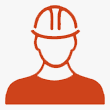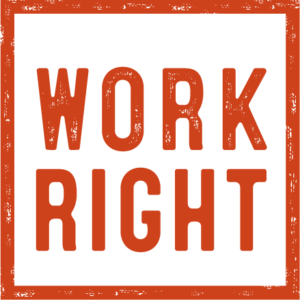EMPLOYERS
Construction dust is not just a nuisance. It’s a real risk to workers’ lungs.
Regularly breathing construction dust can cause diseases like lung cancer, asthma, chronic obstructive pulmonary disease (COPD) and silicosis.
Construction workers have a high risk of developing these diseases because many common construction tasks can create high dust levels.
These diseases cause permanent disability and early death.
IF YOU FAIL TO PROTECT YOUR WORKERS’ HEALTH, THERE ARE SERIOUS RISKS
Human

Financial

Reputational

REDUCING EXPOSURE TO CONSTRUCTION DUST
Some of the most common construction jobs create high dust levels. These jobs often involve the use of power tools like cut-off saws, grinders, breakers and sanders.
There is a legal duty for employers to prevent or adequately control worker exposure to construction dust.
Ideally, you will eliminate workers’ risk of exposure to dust by good design and planning. Where this is not possible, you should put measures in place to control dust and provide workers with appropriate masks.
Employees need to play their part and take responsibility for wearing a mask. A mask does not offer protection if it leaks. A major cause of leaks is poor fit – tight fitting masks need to be fitted to a person’s face to be effective.
HOW TO PREVENT OR ADEQUATELY CONTROL THE RISKS FROM CONSTRUCTION DUST
There are different types of materials used in construction including plaster, wood and silica-based materials such as stone, brick and concrete. Tasks such as drilling and sawing these materials, and dry sweeping up afterwards, give rise to dusts which when inhaled may cause irritation, or more serious diseases such as asthma or lung cancer.
A HIERARCHY OF CONTROLS
- Eliminate the risks from dust by effective design and planning, for example, by using pre-cut materials
- Minimise the risks by using suitable control measures
- Wear an appropriate respiratory mask
REDUCE THE RISK OF ILL HEALTH
The risk of ill health may be reduced to near zero levels by straightforward measures such as preventing dusty work in the first place by purchasing pre-cut materials. Dust can be controlled by wetting saw blades or applying on-tool exhaust ventilation, and workers health protected by wearing a suitable respiratory mask.
The risks can be reduced to near zero levels by consideration of the hierarchy of controls and simple, affordable techniques such as wetting circular saw blades when cutting or breaking stone or concrete, or on-tool extraction, for example when cutting wood.
Construction dust: HSE information sheet


